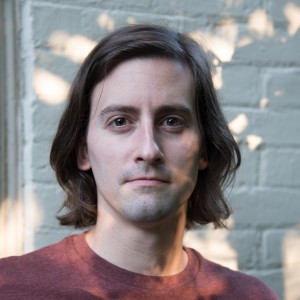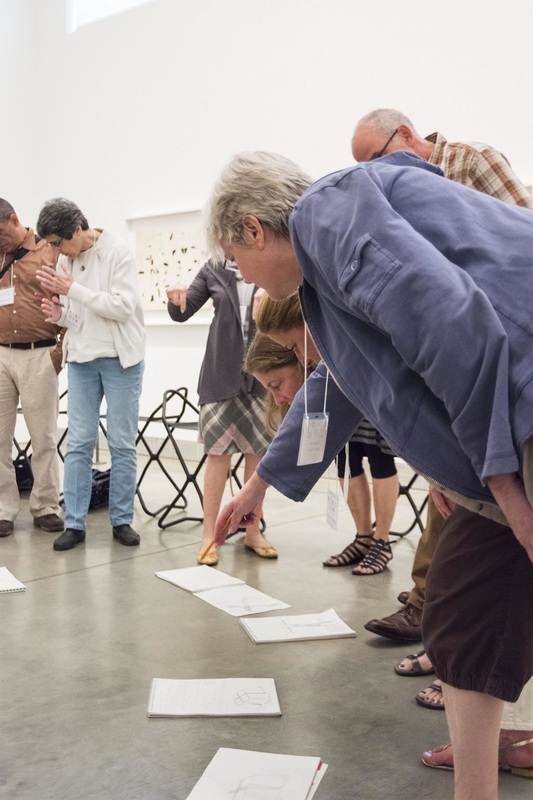Written by Mike Murawski
Early this week, it was so fantastic to see the Birmingham Museums Trust announce its decision to bring Sara Wajid and Zak Mensah on as joint CEOs, making a bold leap into co-leadership that can help serve as a model for many other museums and nonprofit institutions in the years to come. I am particularly thrilled to hear this news since, over the past few months, I have taken a dive into the practices of collaborative and shared leadership in museums and nonprofits, thinking more deeply about this approach and seriously asking why more museums are not adopting this. It has been made clear that most museum professionals are not aware of established models to look toward for this practice (few still exist), and the significant benefits of collaborative leadership are not widely understood in our field. Outdated ideas of solo leadership remain the dominant narrative in the field of museums, but that is beginning to change.
I am moderating a panel session on the topic for MuseumNext’s virtual conference this October, bringing together individuals with experience in co-leadership roles in museums and arts organizations. My interest in this issue also comes out of my recent call for our field to upend our thinking about leadership and make some significant changes as we move into the future. Here is some of what I have found, and some helpful readings and resources for those working to advocate for this type of change at your institution. And please, if you know of other examples of co-leadership in practice at a museum or other useful resources, please share (and I can add them in here).
Collaborative Leadership That Works
If the current moment of crises is indeed a unique and unprecedented opportunity for museums to reimagine themselves and emerge as more human-centered institutions, then I cannot think of a better time to seriously consider adopting a collaborative and shared approach to leadership. Not only do collaborative forms of leadership align more strongly with organizational cultures working to advance equity and anti-racism, but it is also increasingly difficult for any single individual to possess all of the skills and abilities needed to lead a complex organization into a future of post-pandemic uncertainties.
In his post entitled “Museum Leadership for the Rest of Us,” Robert Weisberg cites a roundtable conversation among business experts and senior partners at McKinsey that calls into question the hero mentality of directors and CEOs in times of crisis. When asked “Does this mean we are seeing the end of the hero CEO?,” Bill Schaninger responded:
“[W]e’ve seen COVID-19 accelerating the shift away from classic authoritarian leadership to new forms of distributed decision making…. CEOs still trying to hold on to top-down mandates could very quickly become the impediment rather than the solution.”
A small number of museums have moved towards various forms of collaborative leadership, although examples are still difficult to come by and there are very few sustained or permanent commitments to these alternative forms of leadership. After a bit of a lengthy search, I was able to find a few examples to note:
- Beginning in 2016, Deyan Sudjic and Alice Black served in co-director roles at the Design Museum in London. Both individuals stepped down from these roles in January 2020, and the institution appointed Tim Marlow in a solo director role as well as the first person to serve as chief executive officer.
- In 2019, Sabina Sabolovic, Natasa Ilic and Ivet Curlin were collectively hired to take equal share in running the Kunsthalle Wien (Vienna), after the sudden resignation of the Kunsthalle’s previous director Nicolaus Schafhausen.
- The Five Oaks Museum (previously the Washington County Museum) transitioned from a single director to a co-director model in 2019 with the promotion of Molly Alloy and Nathanael Andreini in its first co-director roles.
- At the Fort Collins Museum of Discovery, an organizational merger back in 2008 led to a unique dual leadership model based in a public/private partnership structure. Cheryl Donaldson and Laura Valdez currently serve as Co-Executive Directors of the museum, a model grounded in a partnership relationship and based in co-expertise.
- The Museum of New Zealand Te Papa Tongarewa (Te Papa) established a bicultural dual leadership model when it was founded in the 1990s. The partnership between the Chief Executive Officer and Kaihautū (Māori leader) reflects the bicultural nature of the museum. Te Papa acknowledges the unique position of Māori in Aotearoa New Zealand and the need to secure their participation in the governance, management, and operation of the museum. Arapata Hakiwai has served in the role of Kaihautū since 2013, while Courtney Johnston more recently entered the role of Chief Executive Officer in December 2019.
- And, of course, now the fantastic news from Birmingham Museums Trust, one of the UK’s largest independent museum trusts.
Outside of museums, there are many nonprofits and arts organizations adopting a shared leadership or co-directorship model. A 2017 article in Nonprofit Quarterly shared insights from five leading nonprofits that have developed shared leadership structures, including the Building Movement Project, Management Assistance Group, and the Rockwood Leadership Institute. Arts nonprofit Fractured Atlas has been operating with a shared, non-hierarchical leadership model since 2018, using a moment of leadership transition to experiment with new organizational structures. Fractured Atlas began this new approach with a four-person leadership team, and they have written rather extensively about their experiences with this model thus far (via their blog).
After studying some of the research on the topic along with the experiences of those successfully implementing collaborative and shared leadership models, there are several key benefits that appear to emerge:
1. Leads to more effective decision-making
When it comes to decision-making, a collaborative leadership approach focuses more on quality than efficiency. Making decisions may take more time, but this process brings in more perspectives and ideas and results in doing things better collectively. With this process also comes greater transparency as more individuals and staff are involved in making decisions and talking through ideas. In his study entitled “Shared Leadership: Is It Time for a Change?,” Michael Kocolowski found that organizations identified several benefits of shared leadership, including the “synergy and expertise derived from shared leadership” and “diversity of thought in decision making.”
In 2019, Cheryl Donaldson and Donna Jared, then Co-Executive Directors at the Fort Collins Museum of Discovery, reflected on some of the keys to making co-leadership work. For them, this model means that co-leaders are bringing their own expertise to the organization and the daily decisions that are made. While each has some autonomous responsibilities, they note that “the lines are blurred, on purpose, to allow us to support one another, to bring different perspectives to decision making, and to hold each other accountable” (see interview with Jill Stilwell).
According to Tim Cynova, a member of Fractured Atlas’s co-leadership team, their shared leadership model “lessens the organization’s dependence on any one person, and strengthens strategic thinking and decision-making capacity across a broad range of staff members” (see Tim’s post “CEO Not (Necessarily) Required”). When there is more than one leader—and when leadership becomes part of organizational culture—it becomes even more critical to spend a lot of time thinking together, sharing ideas, communicating, and being as transparent as possible.
2. Cultivates innovation and growth
For many organizations adopting collaborative and shared leadership models, there is an observed increase in innovation and experimentation. Kocolowski observed that “flow and creativity seem to flourish in a shared leadership environment,” and that such shared leadership models are particularly important for the growth and development of new ventures and projects. “Co-leadership allows you to think bigger and dream knowing you have a thought partner to dream with,” noted Donaldson and Jared at the Fort Collins Museum of Discovery.
In a traditional top-down leadership model, there is often a sense that the knowledge, expertise, and ideas of those at the very top are more valued and important. This way of siloing and isolating innovation in a single leader or small group of managers can work to prevent an organization from truly reaching its potential. A collaborative organization aims to unlock the knowledge, lived experiences, and creative capacities of its entire team, breaking down the barriers that prevent new ideas from bubbling to the surface. As Darlene Nipper of the Rockwood Leadership Institute puts it, “What we’re able to accomplish together is way more than I believe any one person could accomplish.”
3. Centers the value of relationships
A shared leadership model brings attention to the relational and collaborative aspects of work as well as the ways in which the value of relationship itself can be incorporated into the leadership structures of an organization. As social justice activist and author adrienne maree brown proclaims in her book Emergent Strategy (2017), “Relationships are everything,” and the depth of those relationships determines the strength of a system or organization.
For many in co-directorship roles, they develop a strong sense of connection, respect, and mutual trust with their counterpart. For these models to work effectively, an organization needs to center these values and understand the importance of relationships within organizational culture. Donaldson and Jared reflect about their experience at the Fort Collins Museum of Discovery, “As co-leaders, we’ve come to understand it is the partnership relationship that is leading the institution, not us an individuals.”
4. Promotes shared leadership across the organization
“Shared leadership does really work, and when it’s working well, it’s not just about the few people who are codirectors, it’s actually about the whole organization,” states Susan Misra, co-director at the Management Assistance Group. Collaborative leadership is not just about the individual leaders sharing power and working together—it is also about changing organizational culture and mindset to be more collaborative. For most organizations successfully adopting a shared leadership model, developing a co-directorship is just the beginning of a longer process of building collective structures and new ways of working that include the voices of all staff. Erin Matson, Co-Director of Reproaction, acknowledges, “The co-directorship model is a powerful was to expand the leadership capabilities of your organization.”
For Donaldson and Jared, their co-leadership approach at the Fort Collins Museum of Discovery models a flattening out of the organizational chart. They expanded their shared leadership approach to include director level staff who are invited to work together as a shared group rather than only oversee their own specific departments or areas. Other organizations, including Fractured Atlas and the Five Oaks Museum, have used this moment of collaborative leadership to also deeply explore pay equity and transparency. When organizations take this approach, leadership growth can occur across an entire team and begin to have a powerful effect on many areas of work and practice.
5. Aligns with anti-racism and equity
With collaborative leadership comes the opportunity to examine what power looks like within your organization and to reimagine how it operates in more equitable and inclusive ways. For some organizations, the shift to co-directorship emerges during a transition out of a particularly oppressive situation with traditional leadership. Overall, a top-down, individualistic model of leadership is in direct contradiction with efforts to advance equity, inclusion, and anti-racism. In their discussion with CompassPoint team members about shared power, co-directors of several social-justice-focused nonprofits noted that forms of traditional, hierarchical leadership just did not align with the work they do as organizations.
As noted in Leadership and Race: How to Develop and Support Leadership that Contributes to Racial Justice, a report developed through a research initiative of the Leadership Learning Community:
“We often reward people whose leadership style is aligned with the individual model of the dominant culture, but not those who engage in more collective forms of leadership. This serves to render invisible the leadership of many women and people of different races/ethnicities.”
The report’s authors continue:
“Leadership can play a critical role in either contributing to racial justice or reinforcing prevailing patterns of racial inequality and exclusion…. To achieve racial and social justice, we need to move beyond the emphasis on the power of individuals to a philosophy of interdependence and building connections.”
Fractured Atlas Board members Christopher Mackie and Russell Willis Taylor state that the shared leadership model in their organization makes “a powerful statement against the inevitability of hierarchy and the racist, sexist, and otherwise oppressive social institutions and organizations that it enables” (see their post “Thoughts on Co-Leadership: What So We Think We’re Doing?”). For Fractured Atlas, their non-hierarchical leadership team helps advance their core values of anti-racism and anti-oppression by modeling an inclusive approach that fosters a diversity of voices, perspectives, and skills. By questioning and breaking away from the commonly accepted ideas of leadership based in white dominant culture, organizations can move toward more inclusive forms of decision-making, collaborative practice, and collective workplace culture.
Taking Action to Build a Different Future
In her June article “On the Limits of Care and Knowledge,” Yesomi Umolu, Director and Curator of Logan Center Exhibitions at the University of Chicago, sharply highlighted the broken foundations of colonial violence and exclusion for museums, writing:
“at a time when many civic institutions are being exposed for negligence of duty, museums must recognize their shortcomings and develop new ways of thinking and doing.”
By replacing the outdated, broken, and harmful structures of individualistic leadership and leader-centered organizational hierarchy, we have the potential to reinvent museums as vibrant, thriving, equitable institutions that are better equipped to navigate the unprecedented challenges of our times and more fully care for their staff and their local communities. Yet nothing is going to change unless we question our assumptions, fight against the entrenched barriers of the status quo and the “we can’t” mentality, and begin to take action to make change happen. I hope that this post includes some information and resources that can support those making arguments for collaborative leadership right now, and that it might help spark more institutions to consider moving in this direction.
Series on Leadership
This is the third post in a series called “Leading Towards a Different Future” that takes a deeper dive into ideas about leadership and some steps for taking action. I am, of course, open to questions, conversation, and bringing together more ideas that can help us move toward changing museums. Add to the Comments below, message me via social media, or send me an email at murawski27@gmail.com.
Other posts in this series include:
* * *
About the Author
MIKE MURAWSKI: Independent consultant, change leader, author, and nature lover living in Portland, Oregon. I am passionate about transforming museums and non-profits to become more equitable and community-centered. After more than 20 years of work in education and museums, I bring my personal core values of deep listening, collective care, and healing practice into the work that I lead within organizations and communities. Learn More.
* * *
Header Image: “brainstorming over paper” by Scott Graham on Unsplash











 ELIZABETH WILLIAMS is the John Walsh Senior Fellow in Education at the Yale University Art Gallery. Prior to Yale, she was the Director of Engagement and Learning at the Mississippi Museum of Art, where she oversaw the museum’s family, school, and community programs. Elizabeth has held positions at The Phillips Collection, the Harvard Art Museums, the San Francisco Museum of Modern Art, and Americans for the Arts. She holds a Master’s in Education from Harvard University and a Bachelor’s degree in Art History and Human and Organizational Development from Vanderbilt University
ELIZABETH WILLIAMS is the John Walsh Senior Fellow in Education at the Yale University Art Gallery. Prior to Yale, she was the Director of Engagement and Learning at the Mississippi Museum of Art, where she oversaw the museum’s family, school, and community programs. Elizabeth has held positions at The Phillips Collection, the Harvard Art Museums, the San Francisco Museum of Modern Art, and Americans for the Arts. She holds a Master’s in Education from Harvard University and a Bachelor’s degree in Art History and Human and Organizational Development from Vanderbilt University



























